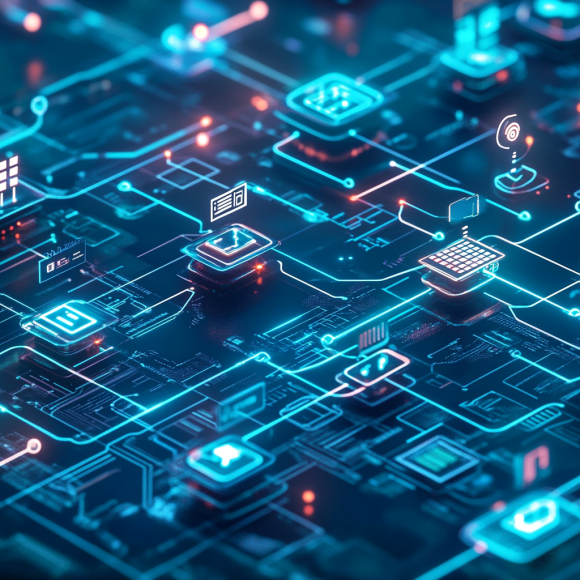The evolution of technology has brought about a paradigm shift in how data is processed and managed. Edge computing represents a significant advancement in distributed computing, enabling faster decision-making, reduced latency, and enhanced efficiency. This article delves into the concept of edge computing, its benefits, applications, and implications for various industries.
What Is Edge Computing?
Edge computing refers to the practice of processing data closer to where it is generated—often referred to as “the edge”—rather than sending it to centralized cloud or data centers. By decentralizing computation, edge computing minimizes delays and improves performance, making it ideal for time-sensitive applications.
Key characteristics of edge computing include:
- Proximity : Data is processed near the source, reducing the need for long-distance transmission.
- Real-Time Processing : Enables instantaneous analysis and response, crucial for applications like autonomous vehicles and smart cities.
- Scalability : Supports large-scale deployments by distributing computational loads across multiple nodes.
Why Edge Computing Matters
As more devices become interconnected through the Internet of Things (IoT), the volume of data being generated continues to grow exponentially. Traditional cloud-based architectures struggle to handle this influx efficiently due to bandwidth limitations and latency issues. Edge computing addresses these challenges by:
- Reducing Latency : By processing data locally, edge computing eliminates the delay associated with transmitting information to remote servers.
- Improving Bandwidth Efficiency : Only relevant data is sent to central systems, freeing up network resources for other tasks.
- Enhancing Security : Sensitive data can be processed locally, reducing exposure risks during transit.
Key Benefits of Edge Computing
Below are some of the primary advantages of adopting edge computing:
1. Faster Decision-Making
Real-time data processing enables quicker responses, which is critical for applications such as industrial automation, healthcare monitoring, and financial trading.
2. Cost Savings
By minimizing reliance on centralized infrastructure, organizations can reduce operational expenses related to bandwidth and storage.
3. Increased Reliability
Decentralized architecture ensures that system functionality is maintained even if connectivity to central servers is disrupted.
4. Improved User Experience
Faster load times and seamless interactions enhance customer satisfaction in areas like gaming, video streaming, and augmented reality.
Applications of Edge Computing
Edge computing has already found widespread adoption across numerous industries. Here are some prominent examples:
1. Smart Cities
Sensors embedded in traffic lights, streetlights, and public transportation systems use edge computing to optimize resource allocation and improve urban living conditions.
2. Healthcare
Wearable devices and medical equipment leverage edge computing to monitor patient vitals in real-time, enabling early detection of potential health issues.
3. Manufacturing
Industrial robots and machinery employ edge computing for predictive maintenance, quality control, and process optimization.
4. Retail
Smart shelves and inventory management systems utilize edge computing to track stock levels and automate restocking processes.
5. Autonomous Vehicles
Self-driving cars rely on edge computing to analyze sensor data and make split-second decisions, ensuring passenger safety.
Challenges in Implementing Edge Computing
While edge computing offers numerous benefits, it also presents certain challenges that must be addressed:
- Complexity : Managing a distributed network requires advanced orchestration tools and expertise.
- Security Risks : With more endpoints comes an increased attack surface, necessitating robust security measures.
- Standardization : Lack of industry-wide standards can hinder interoperability between different edge devices and platforms.
- Resource Constraints : Edge devices often have limited processing power and storage capacity, requiring careful optimization of workloads.
Comparison with Traditional Cloud Computing
To better understand the role of edge computing, let’s compare it with traditional cloud computing:
| Aspect | Cloud Computing | Edge Computing |
|---|---|---|
| Data Processing | Centralized | Local |
| Latency | Higher | Lower |
| Bandwidth Usage | High | Low |
| Use Cases | General-purpose applications | Time-sensitive, real-time applications |
| Scalability | Vertical | Horizontal |
Both approaches have their strengths and are often used together to create hybrid architectures that balance cost, performance, and flexibility.
Emerging Trends in Edge Computing
As edge computing continues to evolve, several trends are shaping its future:
- AI at the Edge Artificial intelligence models are being deployed directly on edge devices, enabling intelligent decision-making without relying on cloud resources.
- 5G Integration The rollout of 5G networks provides the necessary bandwidth and low latency required for edge computing to reach its full potential.
- Multi-access Edge Computing (MEC) MEC extends edge computing capabilities to mobile networks, allowing operators to offer new services and improve user experiences.
- Sustainability Edge computing contributes to environmental sustainability by reducing energy consumption associated with data transfer and centralized processing.
Conclusion
Edge computing marks a transformative shift in how data is processed and managed, offering unprecedented opportunities for innovation and efficiency. Its ability to deliver real-time insights, reduce latency, and enhance reliability makes it indispensable for modern applications.
This article provides an overview of edge computing, highlighting its benefits, challenges, and applications. As technology continues to advance, edge computing will undoubtedly play a pivotal role in shaping the future of distributed computing.
With this knowledge, you’re well-equipped to explore the possibilities of edge computing and its impact on your industry. Stay ahead of the curve!

